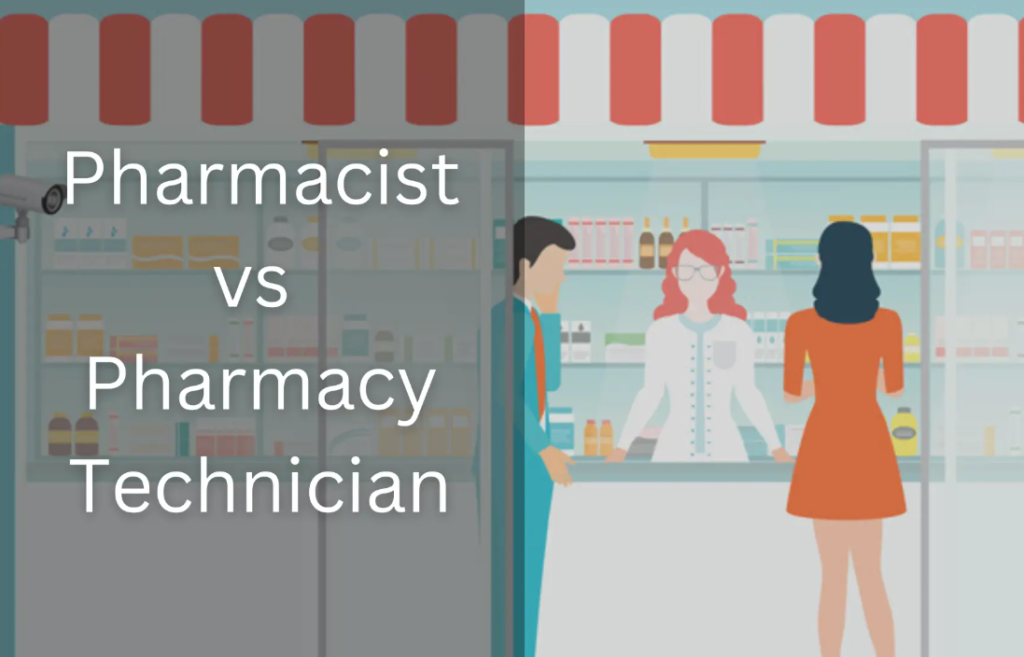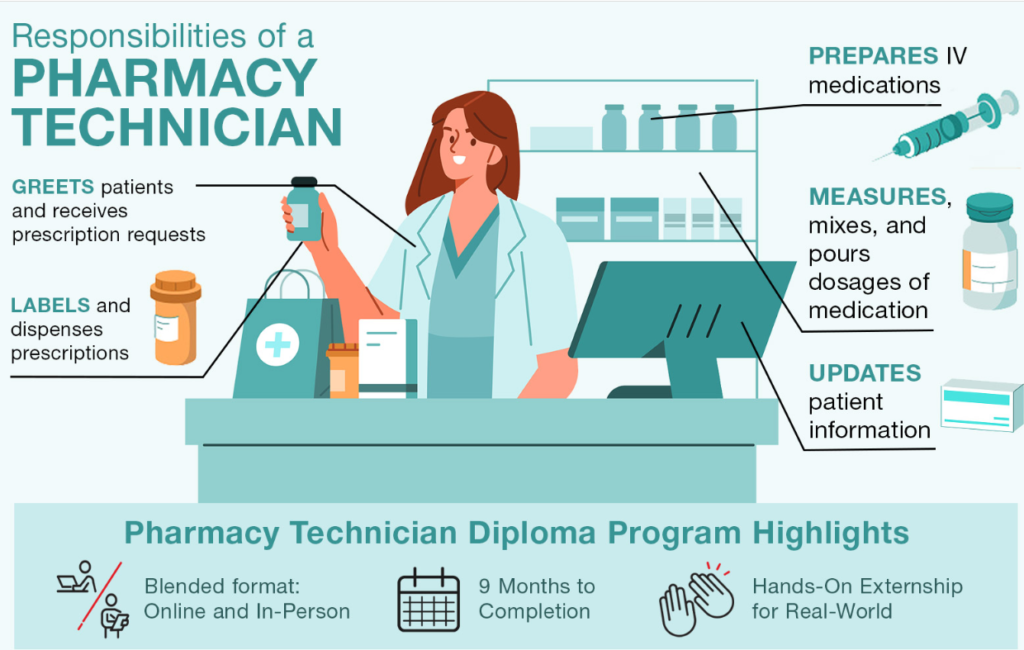Pharmacy Technician vs. Pharmacist: Key Differences Explained
When you visit a pharmacy, you may encounter both pharmacists and pharmacy technicians working together to fill prescriptions, offer guidance on medications, and ensure patient safety. While their roles overlap in some areas, they are distinct professions with different responsibilities, education requirements, and career paths. Understanding the differences between a pharmacy technician and a pharmacist can help you determine which career might be the best fit for you or simply give you a better appreciation of the work done in the pharmaceutical field.
What is a Pharmacist?
A pharmacist is a licensed healthcare professional who specializes in medications, their uses, and their effects on the human body. Pharmacists are responsible for ensuring that medications are dispensed safely and correctly, offering advice to patients on medication use, and collaborating with other healthcare providers to optimize treatment plans.

Key Responsibilities of a Pharmacist:
Reviewing and verifying prescriptions from doctors.
Educating patients about medication dosages, side effects, and interactions.
Compounding medications when necessary.
Ensuring the correct and safe dispensing of medications.
Consulting with physicians and other healthcare providers to ensure the best treatment plans.
Managing and overseeing pharmacy technicians.
Conducting medication therapy management and patient counseling.
Staying updated with new pharmaceutical advancements and regulatory changes.
Education and Training Requirements for Pharmacists
Becoming a pharmacist requires extensive education and training. The typical path includes:
Bachelor’s Degree (Optional) – Some students complete a bachelor’s degree in a related field before applying to a Doctor of Pharmacy (PharmD) program.
Doctor of Pharmacy (PharmD) Degree – This is a four-year professional program that provides in-depth knowledge of pharmacology, medicinal chemistry, and patient care.
Internships and Clinical Training – Hands-on experience is required to prepare pharmacists for real-world practice.
Licensure – After completing a PharmD program, graduates must pass the North American Pharmacist Licensure Examination (NAPLEX) and meet state-specific requirements.
What is a Pharmacy Technician?
A pharmacy technician works under the supervision of a pharmacist and plays a crucial role in the day-to-day operations of a pharmacy. Pharmacy technicians assist with preparing and dispensing medications, managing inventory, and handling customer service tasks.
Key Responsibilities of a Pharmacy Technician:
Receiving and processing prescriptions from patients and doctors.
Measuring, mixing, and labeling medications as directed by the pharmacist.
Managing pharmacy inventory and restocking medications.
Assisting customers with questions and referring them to the pharmacist for further guidance.
Handling insurance claims and payment processing.
Maintaining patient records and ensuring compliance with pharmacy regulations.
Education and Training Requirements for Pharmacy Technicians
Becoming a pharmacy technician is a faster and more accessible path than becoming a pharmacist. The general steps include:
High School Diploma or Equivalent – Most pharmacy technician programs require at least a high school diploma.
Pharmacy Technician Training Program – Pharm Tech EDU can get you certified with the PTCE within 6 weeks or less for at little as $490
On-the-Job Training – Some pharmacy technicians receive training directly in a pharmacy setting without formal schooling.
Certification (Optional but Recommended) – Some states require pharmacy technicians to become certified through the Pharmacy Technician Certification Exam (PTCE) or another recognized credential.
Key Differences Between a Pharmacist and a Pharmacy Technician
| Aspect | Pharmacist | Pharmacy Technician |
|---|---|---|
| Education | Doctor of Pharmacy (PharmD) | High school diploma + training program |
| Licensing | Must pass NAPLEX and state-specific exams | Certification required in some states |
| Responsibilities | Reviews prescriptions, counsels patients, manages pharmacy operations | Prepares medications, assists customers, handles administrative tasks |
| Supervision | Works independently and supervises technicians | Works under the pharmacist’s supervision |
| Salary | Higher salary due to extensive education and responsibilities | Lower salary but faster entry into the workforce |
| Career Advancement | Opportunities in research, hospital pharmacy, clinical pharmacy, or management | Can advance to lead technician roles or pursue pharmacist education |
Which Career Path is Right for You?
Choosing between becoming a pharmacist and a pharmacy technician depends on several factors, including your educational goals, desired salary, and long-term career ambitions.
Choose a Pharmacist Career If:
You are willing to commit to many years of education and training.
You want a higher earning potential.
You are interested in patient counseling, medication management, and working closely with healthcare teams.
You are looking for a career with diverse opportunities, including research, clinical work, and teaching.
Choose a Pharmacy Technician Career If:
You want to enter the workforce quickly with minimal education requirements.
You enjoy working in a fast-paced pharmacy setting with hands-on tasks.
You are comfortable with assisting customers and handling administrative responsibilities.
You see it as a stepping stone to a pharmacist career in the future.

Job Outlook and Salary Comparison
The demand for both pharmacists and pharmacy technicians is expected to remain steady as the healthcare industry continues to grow. However, there are differences in salary and job prospects.
Pharmacist Salary: According to the U.S. Bureau of Labor Statistics (BLS), the median annual salary for pharmacists is around $128,000, depending on location, experience, and work setting.
Pharmacy Technician Salary: The median annual salary for pharmacy technicians is approximately $37,000, with variations based on certification, experience, and geographic location.
In terms of job outlook, pharmacy technicians may see higher employment growth due to increasing demand for prescription medications and expanding roles within retail and hospital pharmacies. Pharmacists, while still in demand, may face slower job growth due to automation and increased responsibilities being delegated to technicians.
Conclusion
Both pharmacists and pharmacy technicians play crucial roles in healthcare and medication management. While pharmacists take on more responsibilities, requiring extensive education and offering higher salaries, pharmacy technicians provide essential support and can start working with relatively short training periods. If you are interested in the pharmaceutical field, evaluating your long-term career goals, financial investment in education, and job preferences can help guide you to the right path. Whether you choose to be a pharmacist or a pharmacy technician, both careers contribute significantly to patient care and the overall healthcare system.
